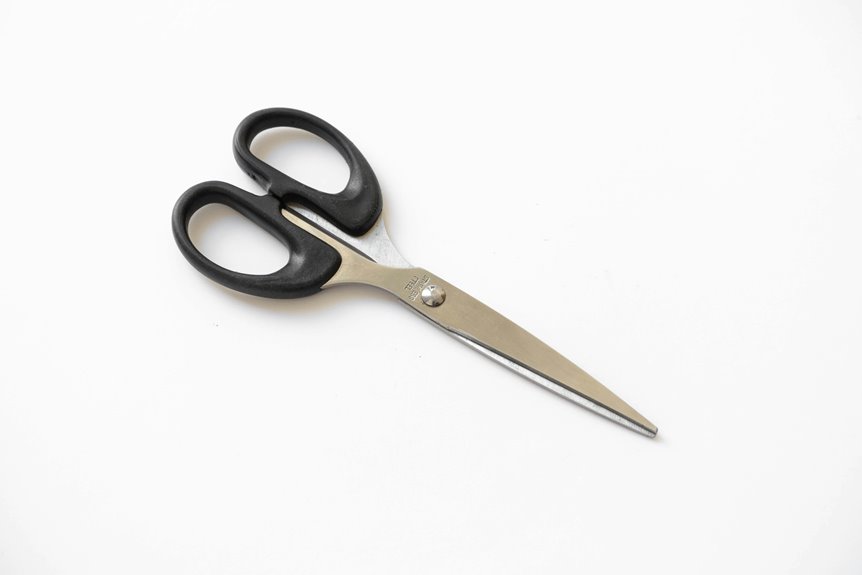To achieve perfect desk ergonomics at home as a shorter individual, start by adjusting your desk and chair heights. Your desk should be 1 to 2 inches above your elbow height, and your chair needs to let your feet rest flat on the ground. Use a footrest if necessary. Position your monitor at eye level, about an arm’s length away, and keep your mouse within easy reach. There’s more to optimizing your setup for comfort and efficiency, so keep exploring!
Table of Contents
Key Takeaways
- Adjust your chair height so your feet rest flat on the floor, keeping your thighs parallel to the ground.
- Set your desk height 1 to 2 inches above elbow height to maintain a 90-degree angle while typing.
- Use a footrest if your feet do not reach the ground fully, ensuring proper posture support.
- Position your monitor at eye level, about an arm’s length away, to avoid neck strain.
- Take regular breaks every hour to stretch and reset your posture for optimal comfort.
Understanding Desk Ergonomics for Shorter Individuals
Although many desk setups are designed with an average height in mind, understanding desk ergonomics is essential for shorter individuals to guarantee comfort and productivity.
You’ll want to make sure your feet rest flat on the ground, promoting stability. If your chair is too high, consider using a footrest to maintain proper posture. Your elbows should be at a 90-degree angle when typing, so adjust your desk or chair height accordingly.
Keep your monitor at eye level to avoid neck strain—this might mean raising it with a stand. Finally, maintain a neutral wrist position while typing to prevent discomfort.
Choosing the Right Desk and Chair Height
When selecting the right desk and chair height, it’s essential to take into account your unique body dimensions to create a comfortable workspace.
Start by measuring the height of your knees while sitting. Your desk should allow your elbows to rest comfortably at a 90-degree angle. Ideally, the desk should be about 1 to 2 inches above your elbow height.
For your chair, look for a model with adjustable height settings. Guarantee your feet are flat on the ground, and your thighs are parallel to the floor.
If your feet don’t reach the ground, consider using a footrest. By customizing these elements, you can promote better posture, reduce strain, and enhance your overall productivity while working from home.
Essential Tools for Enhancing Comfort
Once you’ve adjusted your desk and chair height for ideal positioning, consider incorporating tools that can further enhance your comfort.
A footrest can provide vital support, helping you maintain proper posture by keeping your feet flat and relieving pressure on your legs. An adjustable keyboard tray guarantees your wrists stay straight while typing, reducing strain.
A monitor riser elevates your screen to eye level, preventing neck strain and promoting better alignment. Don’t forget a comfortable chair cushion for added lumbar support.
If you’re often on the phone, a headset can free up your hands and keep your posture aligned. These essential tools can make a significant difference in your daily comfort and productivity.
Key Adjustments for Optimal Workspace Setup
To create an ideal workspace setup, start by guaranteeing your chair and desk heights are properly adjusted for your stature.
Your chair should allow your feet to rest flat on the floor, with thighs parallel to the ground. Adjust the desk height so your elbows are at a 90-degree angle when typing. If your desk is too high, consider using a keyboard tray or adjusting your chair height.
Next, position your monitor at eye level, about an arm’s length away, to reduce neck strain. Use a document holder for any papers you reference frequently, keeping them close to your screen.
Finally, ascertain your mouse is within easy reach to avoid unnecessary stretching. These simple adjustments can greatly enhance your comfort and productivity.
Maintaining Good Posture While Working
Although it might be tempting to slouch while working, maintaining good posture is essential for your overall comfort and productivity.
Sit all the way back in your chair with your feet flat on the floor or on a footrest. Keep your knees at a 90-degree angle and avoid crossing your legs. Make certain your monitor is at eye level to prevent straining your neck.
Your arms should rest comfortably at your sides, with your elbows at a 90-degree angle while typing. Remember to take breaks every hour to stretch and reset your posture.
Incorporating these habits will help you stay aligned, reducing fatigue and discomfort. Prioritizing your posture not only enhances your well-being but also boosts your focus and efficiency while working.
Frequently Asked Questions
What Desk Accessories Can Help Short Individuals Improve Ergonomics?
To improve your desk ergonomics, consider using adjustable chairs, footrests, or keyboard trays. These accessories can elevate your workspace, helping you maintain proper posture and reducing strain while you work comfortably throughout the day.
Are There Specific Brands Known for Ergonomic Solutions for Shorter Users?
When searching for ergonomic solutions, consider brands like Vari, Fully, and Uplift. They offer adjustable desks and chairs designed for shorter users, ensuring you can customize your workspace for ideal comfort and productivity.
How Can I Customize My Workspace on a Budget?
You can customize your workspace on a budget by using adjustable furniture, adding cushions for support, and organizing with DIY solutions. Look for second-hand items or clearance sales to save money while improving comfort.
What Are Common Signs of Poor Ergonomics in Short People?
You might notice discomfort, persistent neck or back pain, and fatigue during work. If you’re straining to see your screen or feeling pressure in your wrists, those are clear signs of poor ergonomics affecting you.
Can Standing Desks Benefit Shorter Individuals in Terms of Ergonomics?
Yes, standing desks can benefit you as a shorter individual. They allow you to adjust your workspace height, promoting better posture and reducing strain. You can easily find a comfortable position that suits your needs.




